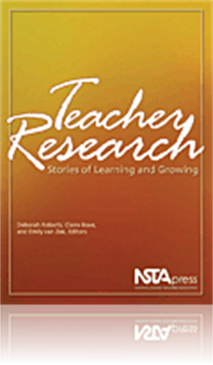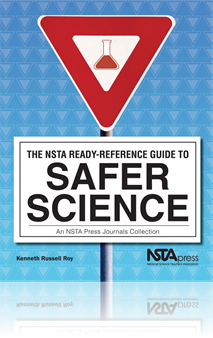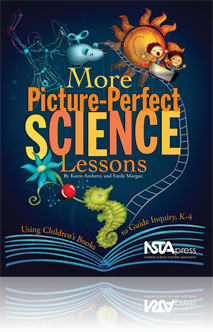All Resources
Book Chapter
Student Teaching as Collaboration
For teachers who are trying to understand what their students think and how they feel, data can include notes found on the floor after class, the letters they as teachers write to their students, and the e-mails they send each other as they puzzle ou...
Book Chapter
Collaborative Conversations and Intentional Reflections on Teaching and Learning Physics
Dorothy Simpson taught mathematics for 15 years before she started teaching physics at Mercer Island High School near Seattle. Now retired, she is serving as a volunteer at a local elementary school with special interest in providing support for the ...
Book Chapter
In some ways, the laboratory safety standards may seem at odds with science laboratory curriculum expectations in an environment attempting to provide for full inclusion of all students. Clearly, not all students will be able to be fully mainstreamed...
Book Chapter
Learners explore the invention process by learning about inventions throughout history and how inventions fill needs or wants, by improving existing inventions, and by keeping a toy invention journal. They further their understandings of the risks an...
Book Chapter
The purpose of this assessment probe is to elicit students’ ideas about seeds. It specifically probes to find out if students recognize that a seed has needs, similar to other organisms that allow it to develop into the next stage of its life cycle...
Book Chapter
The purpose of this assessment probe is to elicit students’ ideas about plant growth. It specifically probes to find out if students think plants only grow if they are exposed to light....
Book Chapter
The purpose of this assessment probe is to elicit students’ ideas about food and plants. The probe is designed to reveal whether students use a biological concept of food to identify what plants use for food....
Book Chapter
The purpose of this assessment probe is to elicit students’ ideas about transformation of matter. The probe is designed to reveal whether students recognize that a gas from the air (carbon dioxide) is combined with water and transformed into the ne...
Book Chapter
The purpose of this assessment probe is to elicit students’ ideas about cell size. The probe is designed to find out if students think that animal cell size is related to the overall size of an animal. ...
Book Chapter
The purpose of this assessment probe is to elicit students’ ideas about when objects can be seen in the sky. Students’ explanations reveal their thinking about the role of light and distance in seeing sky objects. ...
Book Chapter
The purpose of this assessment probe is to elicit students’ ideas about density and buoyancy. The probe is designed to find out how students think an object can be made to float differently. ...
Book Chapter
The purpose of this assessment probe is to elicit students’ ideas about density. The task is designed to find out if students think a solid object will float differently if it has holes poked all the way through it or if they confuse it with mixed ...
Book Chapter
The purpose of this assessment probe is to elicit students’ ideas about boiling point. The probe is designed to find out whether students recognize that if a liquid is boiling under standard conditions, the boiling point remains constant, no matter...
Book Chapter
The purpose of this assessment probe is to elicit students’ ideas about particles during a change in state. The probe is designed to find out if students recognize that the bubbles formed when water boils are the result of liquid water changing int...
Book Chapter
The purpose of this assessment probe is to elicit students’ ideas about chemical bonds. The probe is designed to find out if students think bonds are physical matter or attractions between electrons. ...






